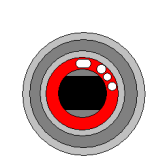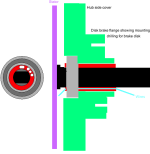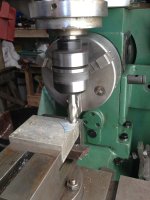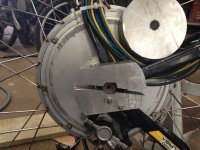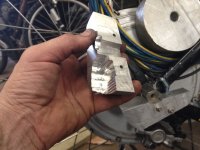Well we have just had the best 5 days of our summer, the first two I was on standby, and did not get called out, and the last three were days off..so what did I do ? Did I enjoy the glourious weather on the beach ..no I have spent the entire 5 days in the workshop making the new axle...Bugger
but at least the axle is done..after a selection of failures

From the top
No. 1 Broken axle
No. 2 test blank I made up 2 years ago, can't remember why now.
No. 3 New axle sent by Kenny @ Xlyte...looks the same but slightly different dimensions.
No. 4 Axle made to dimension of the new axle from Kenny......
No. 5 Made to correct dimensions....after a 12 hour day...I'll just do one more pass....the tool tip snaps and cuts a groove down to 15mm...just visible in the picture
No. 6 Finally a complete axle and spacer for wires on Day 4
Today I did work on a smaller lathe and combined milling machine., cut the flats and tidied up the slots in the collar and stuck the collar to the main shaft with DP420.
Tomorrow I'll press the axle in to the stator..and probably glue that with DP420 too.
The splines are rolled on
I counted 66 splines, and a un-splined diameter on the original axle of 25.35mm.
This works out to a spline pitch of 1.2mm. SO the splines are rolled on using a parallel knurling tool of 1.2mm pitch. This will give the 66 splines
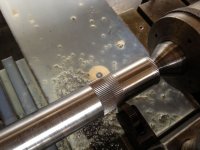
I did not have a proper broaching /slot making machine so i used the lathe. After making the collar, I held it in the lather chuck, and locked the chuck with a ratchet strap.
I then used a boring bar with modified tip, in the tool holder, and ran the tool holdr back and forward to cut the slot for the wires in the collar.
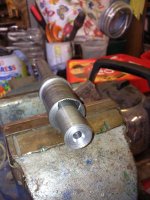
If you are wondering why there are so many holes for the disk brake...I had to re drill and tap them...Xlyte had them all off-centre
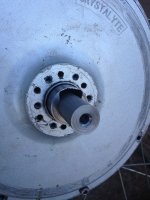
Finally today, machine the flats off on a mill and cut slots in the collar and tried it for size
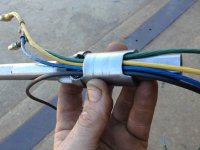
I used a 47x30x9 bearing on the wire side, instead of the standard 47x25x12, so that allowed a 30mm shaft ...or in this case a 30mm collar . The main axle going out either side is now 20mm, with flats made to 18mm , sothinest part of axle is 18mm across the flats.
Slightly differently to standard, I will be fitting it to the bike with the flats horizontal rather than vertical. One of the flats is full length and makes the wire slot slightlh bigger. This will be at the bottom of the axle .
Going to cut the back section of the dropouts out, and make two or 4 bolt clamping brackets to hold the axle.Will need custom brake and derailleur mounts too...but not even looked at that yet..just going to get the wheel fitted to the frame first


